Guyana's Savanna
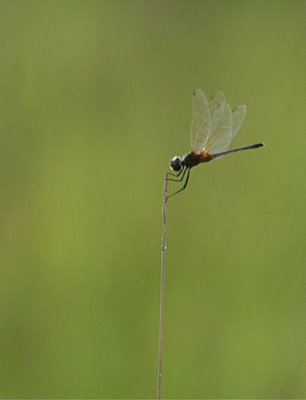
One of the things I hadn't expected to see in Guyana was grassland. I guess I thought it would all be Amazonian rainforest. I was stunned by the visual similarities between Guyana and South Africa, which I visited in 1994, when I was still shooting film. I couldn't get my head around Guyana being in South America when I saw vistas like these.
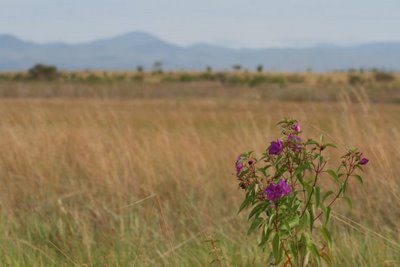
Guyana's savannas are natural, formed where the soil is too thin to support trees. Lightning helps maintain them. We had but a taste of the unique life these savannas support, so very different from the tall forest flora and fauna. There were dragonflies, for one thing, beautiful ones, and one blue one that must be among the smallest true dragonflies on the planet--less than an inch in total length.
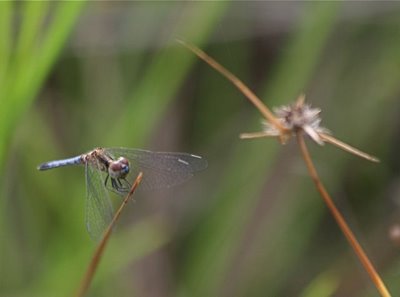 As a naturalist, it was a thrill to me to realize that I was looking at a life form that might be undescribed; endemic; that would set every nerve to tingling in my friends who study the Odonata--and to have no idea what I was looking at. I felt like a musicologist who had stumbled on a remote tribe who'd made instruments out of monkey skulls and shells, listening to music none of his colleagues had been privileged to hear.
As a naturalist, it was a thrill to me to realize that I was looking at a life form that might be undescribed; endemic; that would set every nerve to tingling in my friends who study the Odonata--and to have no idea what I was looking at. I felt like a musicologist who had stumbled on a remote tribe who'd made instruments out of monkey skulls and shells, listening to music none of his colleagues had been privileged to hear.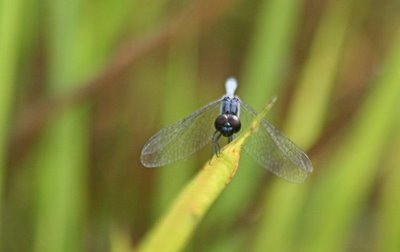 Who are you, elfin one? Does it matter to you?
Who are you, elfin one? Does it matter to you?The mystery continued in the plant kingdom. No idea what this is, even what family it occupies.
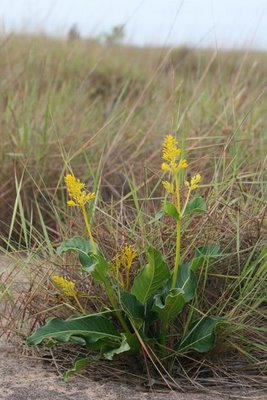
This one, I think, is in the pea family. Had to get down on my knees to see if it had a scent. Not at the moment.
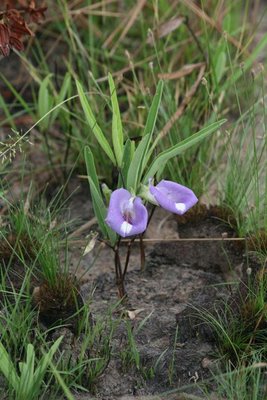
This lovely thing was reminiscent of a Gaura. It also reminded me of Salvia greggii, or Autumn Sage, one of my favorite hummingbird flowers. Even the bee looked exotic.
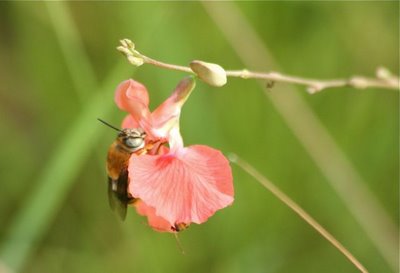
This one, I know, is a melastome, a large tropical family easily identified by the parallel veins in their leaves, and the quilted look made by the cross-veins. I've seen a similar flower grown as a tropical ornamental in San Francisco.
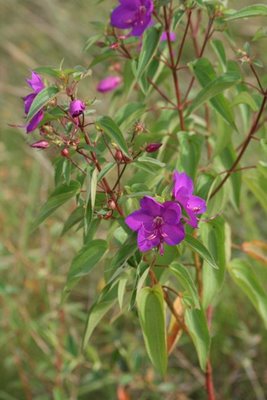
Pull back, and see the landscape--are we in Africa?
A fork-tailed flycatcher says not. East coast birders will recognize it as a strangely frequent fall vagrant, which inexplicably flies up from South America, showing up along the coast from NJ to MA, just when it might freeze to death.
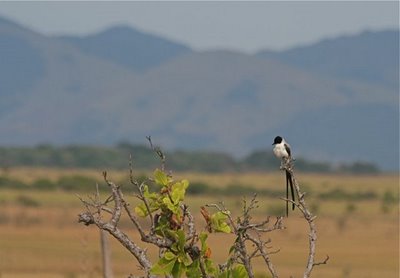
It was good to see this lovely bird at home. It's reminiscent of our scissor-tailed flycatcher, with none of the paradise pink on underwing and flank. Like a kingbird in a tux.
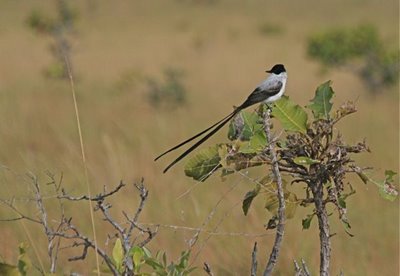
Near the airstrip where we landed, a pair of double-striped thick-knees stalked warily. Enormous relatives of plovers, they have a huge yellow eye with a heavy, weary-looking lid.
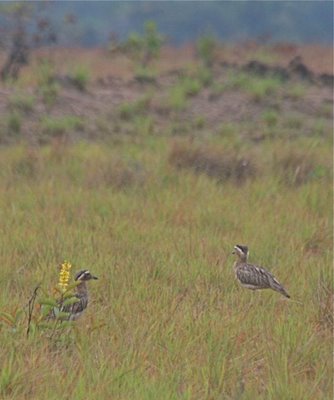
Savanna being hard to find in the Amazon basin, sparrows are hard to find. This plain little creature is the grassland sparrow.
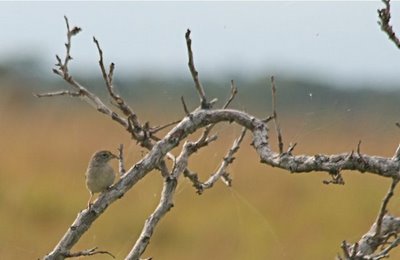
It sits in a pepper tree and voices a buzzy song that might have been a Savannah sparrow's.
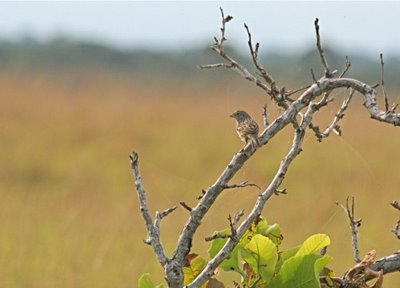 We found all these treasures while ostensibly hunting for an endemic, a skulky little thing of wet open marshes. It's a flycatcher ally called the bearded tachuri. Tell someone you're hunting for a bearded tachuri and see what they think it might be. I somehow snagged a photo before he dove back down into the grass. I love getting photos, any images at all, of weird endemic life birds. But the nice thing about being casual about one's life list is that it's fine with you if you don't see the bearded tachuri. For me, it's all about enjoying the ride. And having probably the only blog on the Internet with "bearded tachuri" in the tagline. Heh. Ooh, that sounds like hubris. I'm sure there are other bloggers writing about tachuris. Somewhere.
We found all these treasures while ostensibly hunting for an endemic, a skulky little thing of wet open marshes. It's a flycatcher ally called the bearded tachuri. Tell someone you're hunting for a bearded tachuri and see what they think it might be. I somehow snagged a photo before he dove back down into the grass. I love getting photos, any images at all, of weird endemic life birds. But the nice thing about being casual about one's life list is that it's fine with you if you don't see the bearded tachuri. For me, it's all about enjoying the ride. And having probably the only blog on the Internet with "bearded tachuri" in the tagline. Heh. Ooh, that sounds like hubris. I'm sure there are other bloggers writing about tachuris. Somewhere.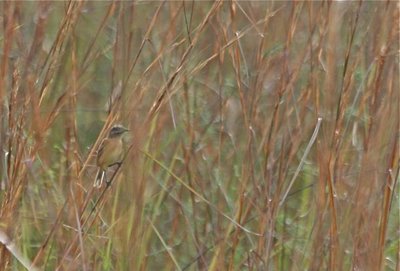
In the marsh, we scared up a trio of muscovy ducks--the slender, wild progenitors of the pot-bellied, red-faced, hissing ogres we've made of them. I will say this--even fat Muscovy ducks retain their ability to fly, which is more than I can say for Pekins.
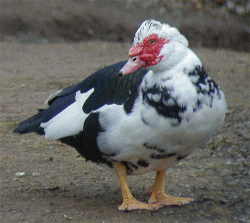 Domestic Muscovy duck--photo lifted from businessafrica.net.
Domestic Muscovy duck--photo lifted from businessafrica.net.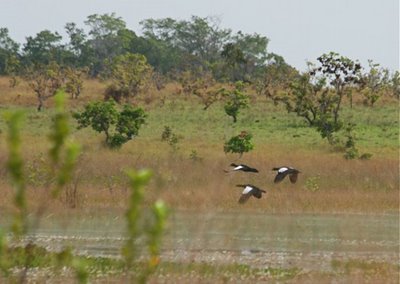 Wild Muscovies, in Guyana. It was so good to see them as they were meant to be.
Wild Muscovies, in Guyana. It was so good to see them as they were meant to be. 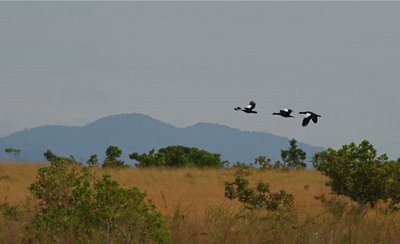
At our feet, an elfin forest of sedges and grasses. I wondered how many decades--perhaps even centuries--old these tiny "trees" might be, their trunks built up with each season's growth.
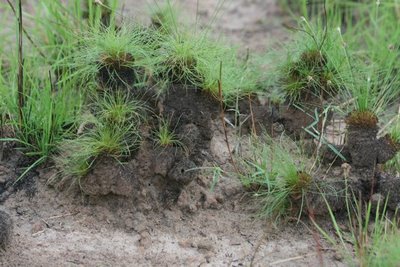
And realized that beneath my feet, termites dwelt in a teeming Gotham, making covered tunnels from one pile of horse dung to the next.
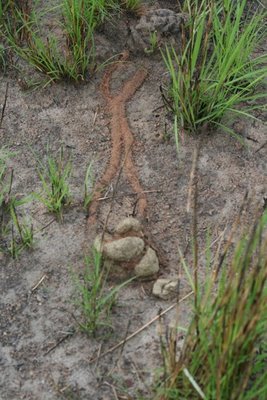
In this metropolis of insects, there is one bad actor--one enormous, all-powerful villain, perhaps the strangest animal that walks the earth, one I had never dared dream I'd see in the wild. We will meet him tomorrow. (Picture Mr. Burns, rubbing his thin white hands together).
I do enjoy cobbling a cheesy serial out of my little travelogue. Cackle!
ZICK ALERT: Wren at The Nature Blog Network just posted an interview with moi at the Nature Blog Network Blog. If only for a couple of highly cute pictures of Chet Baker, and some thoughts on why we blog and what might come of it, please go check it out!
Labels: bearded tachuri, dragonflies, fork-tailed flycatcher, Guyana South America, melastomes, Muscovy ducks, savannah, termites, wild muscovy ducks





